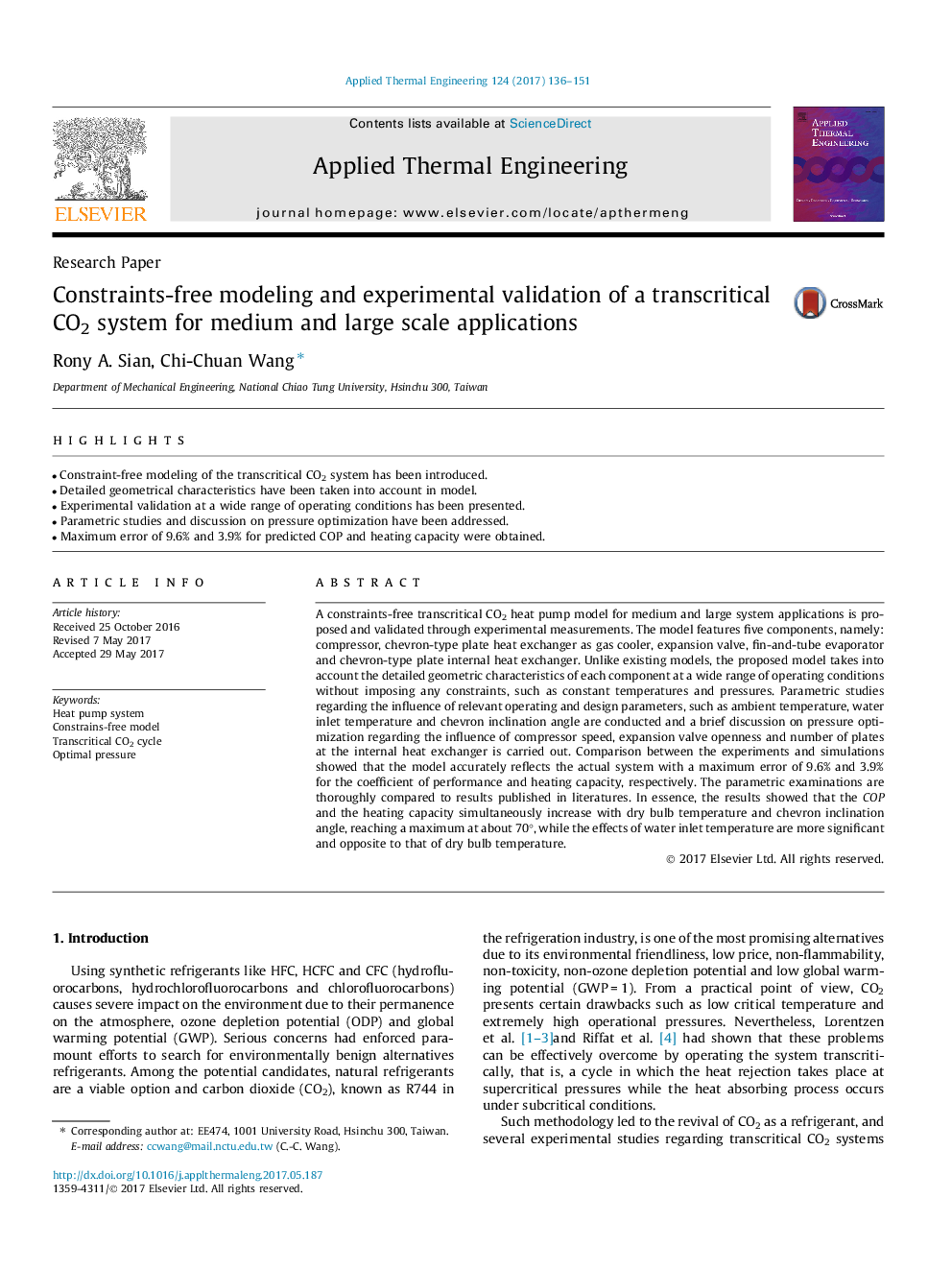| Article ID | Journal | Published Year | Pages | File Type |
|---|---|---|---|---|
| 4990600 | Applied Thermal Engineering | 2017 | 16 Pages |
Abstract
A constraints-free transcritical CO2 heat pump model for medium and large system applications is proposed and validated through experimental measurements. The model features five components, namely: compressor, chevron-type plate heat exchanger as gas cooler, expansion valve, fin-and-tube evaporator and chevron-type plate internal heat exchanger. Unlike existing models, the proposed model takes into account the detailed geometric characteristics of each component at a wide range of operating conditions without imposing any constraints, such as constant temperatures and pressures. Parametric studies regarding the influence of relevant operating and design parameters, such as ambient temperature, water inlet temperature and chevron inclination angle are conducted and a brief discussion on pressure optimization regarding the influence of compressor speed, expansion valve openness and number of plates at the internal heat exchanger is carried out. Comparison between the experiments and simulations showed that the model accurately reflects the actual system with a maximum error of 9.6% and 3.9% for the coefficient of performance and heating capacity, respectively. The parametric examinations are thoroughly compared to results published in literatures. In essence, the results showed that the COP and the heating capacity simultaneously increase with dry bulb temperature and chevron inclination angle, reaching a maximum at about 70°, while the effects of water inlet temperature are more significant and opposite to that of dry bulb temperature.
Related Topics
Physical Sciences and Engineering
Chemical Engineering
Fluid Flow and Transfer Processes
Authors
Rony A. Sian, Chi-Chuan Wang,
